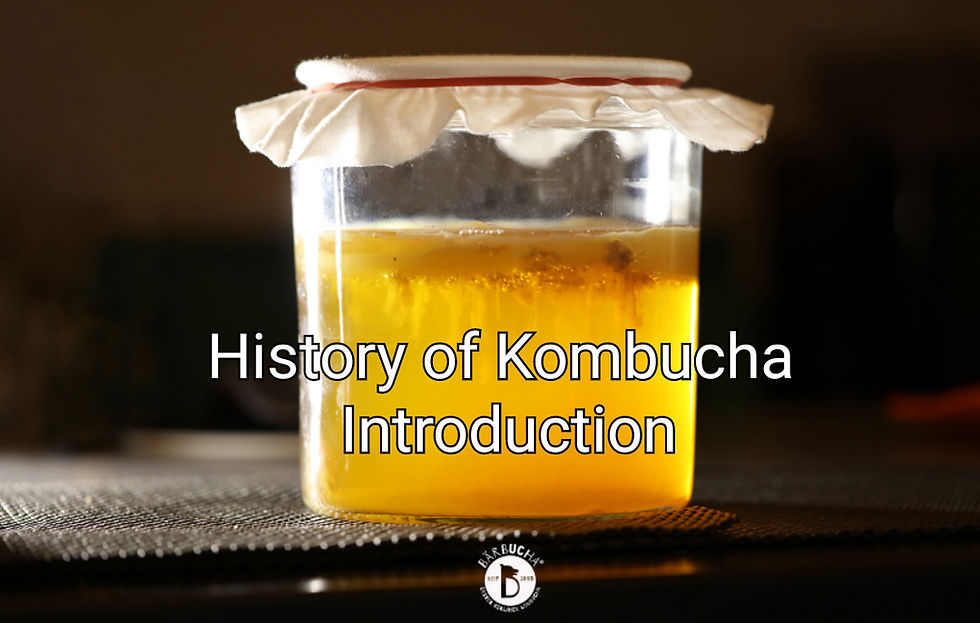Kombucha 101 - Introduction!
- Tadeusz

- 21. Feb. 2022
- 3 Min. Lesezeit
Aktualisiert: 24. Mai 2023
In this Kombucha 101 series, I will write about the importance of all the individual ingredients which are traditionally used to make Kombucha.

I will also write about other aspects, like the fermentation processes, and containers in which Kombucha is fermented.
All of them have a significant role in how the final product (Kombucha) comes out.
But first, for those that are not exactly familiar with this product, a brief definition of what Kombucha is, or at least what Kombucha is supposed to be.
In Wikipedia, one can find the following definition:
"Kombucha (also tea mushroom, tea fungus, or Manchurian mushroom when referring to the culture; Latin name Medusomyces gisevii[1]) is a fermented, lightly effervescent, sweetened black or green tea drink commonly consumed for its purported health benefits. Sometimes the beverage is called kombucha tea to distinguish it from the culture of bacteria and yeast.[2]"
So, to make it short and simple, Kombucha is a drink made from a sweetened tea that has been fermented with the help of a special culture. That culture is called SCOBY, which is an acronym from Symbiotic Colony of Bacteria and Yeast.
The term Kombucha is not legally defined, so there are a lot of drinks that carry the name of Kombucha. Some of those drinks maybe should be called something else.

KBI, a non-profit trade association of commercial brewers from around the world has also come up with a definition for a "Traditionally Fermented Kombucha Tea", which can only be made with the help of tea leaves (Camellia sinensis), and also for "Kombucha" - where other substances are allowed to be used instead of traditional tea leaves.
All the definitions are compiled, and are available on their page, which can be found here.
Contrary to the popular beliefs, both the origins of Kombucha and the origins of the name, are not entirely clear.
For more information about the true history of Kombucha, please go to the corresponding blog entries by clicking on the pics below:

The first part of this series will describe the importance of tea in the traditionally brewed Kombucha, as well as other substances that can be used to make Kombucha, instead of traditional tea. I will also touch on which teas are the best teas for best tasting Kombucha, as well as what to keep in mind when buying tea.

The second part will be about "Sugar".
Sugar is also an essential part of Kombucha production, as without sugar, the fermentation process would not start. Different types of sugar and how they affect the final product, will be presented here.

Water will be the theme of the third blog entry.
Water is just as important as tea and sugar.
In some aspects, it is even more important. But more about that you will find when that blog entry is ready.

The fourth part will deal with "Kombucha (and Jun) Culture".
Things like: "Do I need a separate Scoby for different types of teas?", will be covered here.

Just keep in mind that without this culture and the starter liquid, there would be no Kombucha.
Finally, the fifth blog entry about the "Fermentation processes", and the brewing vessels will sum up this Kombucha 101 series.
Things like F1 and F2 will be cleared up, plus what are the best containers for Kombucha fermentation: stainless steel vessels, wood or glass containers?

All those things and more will be compared here.
So, happy reading!








Kommentare